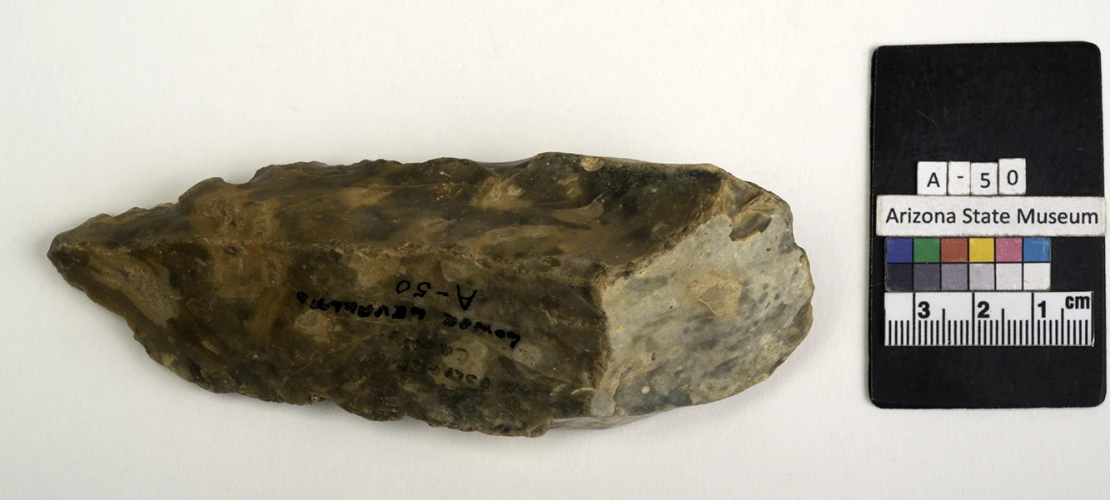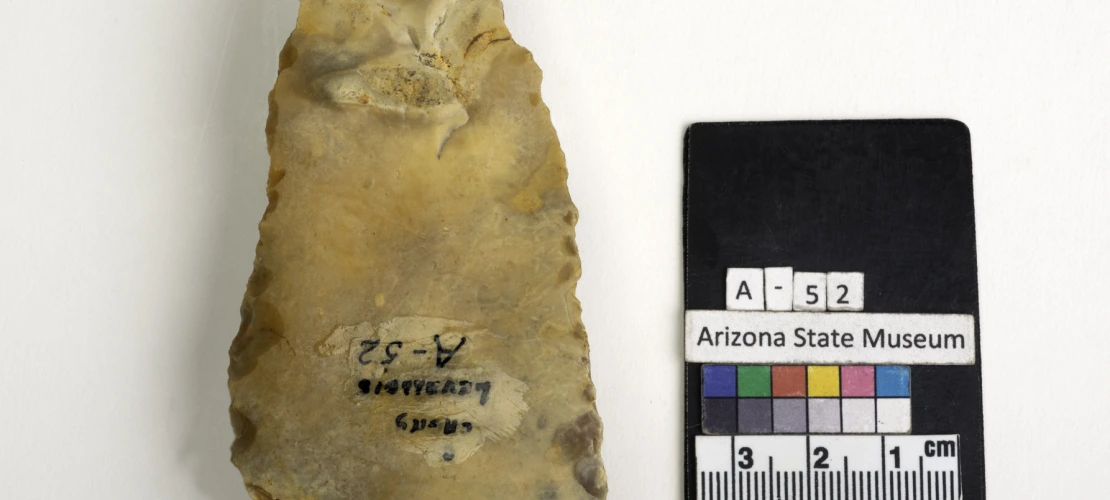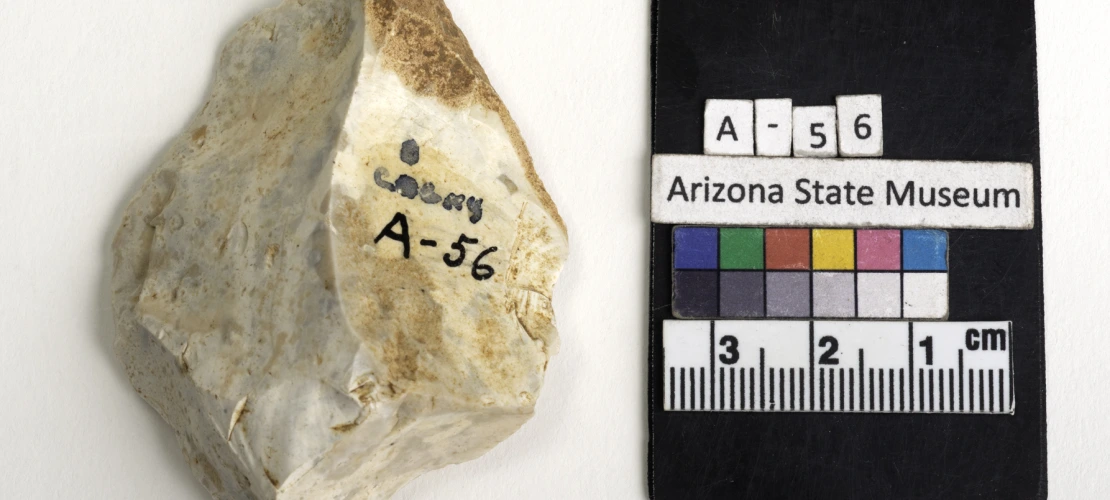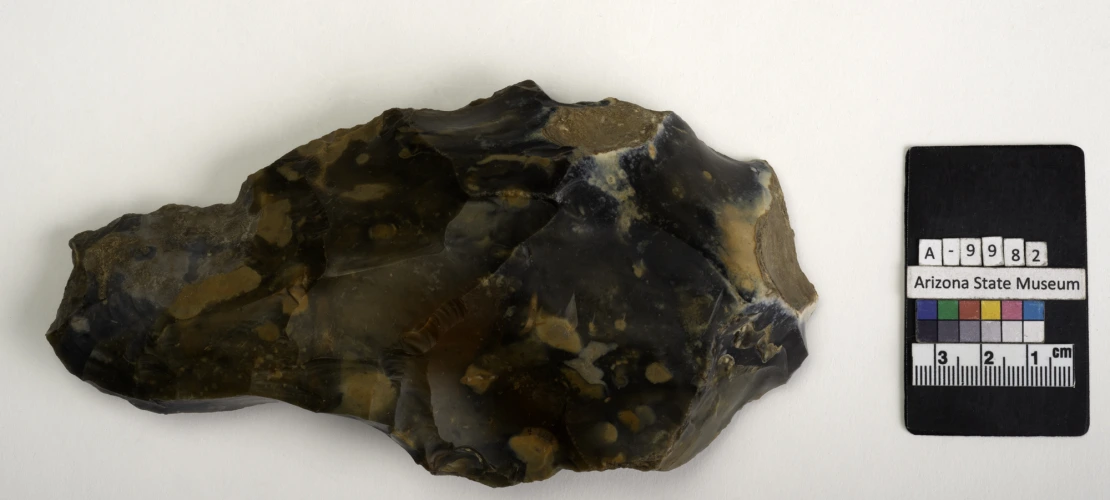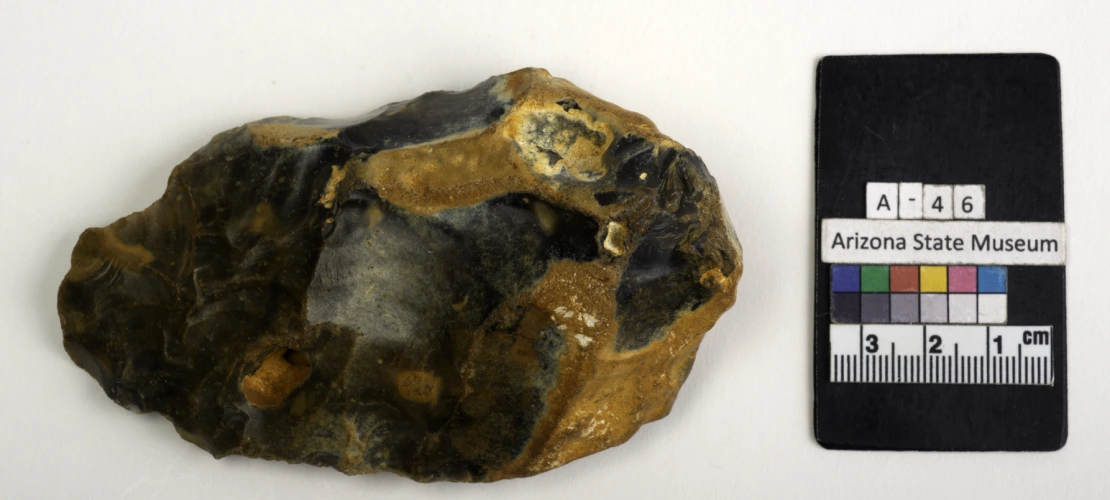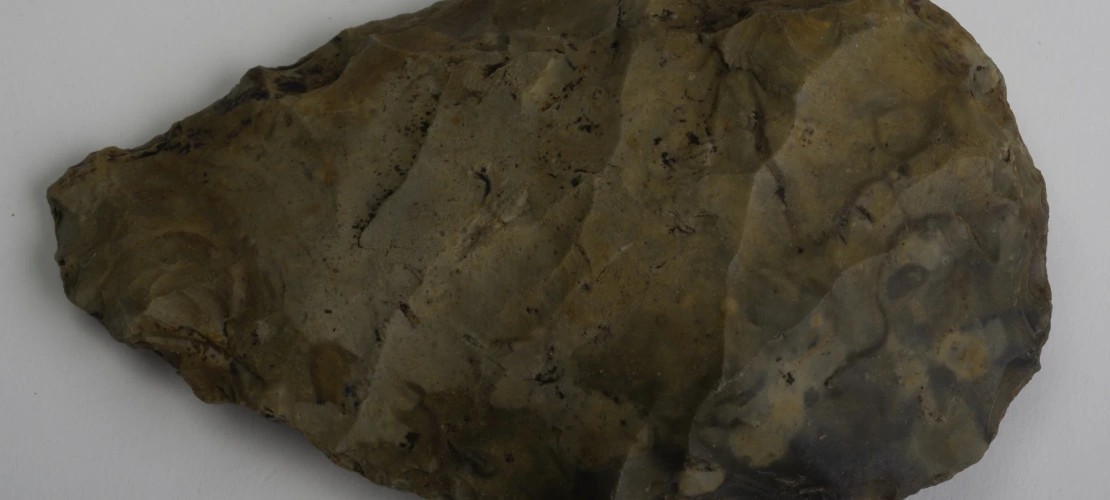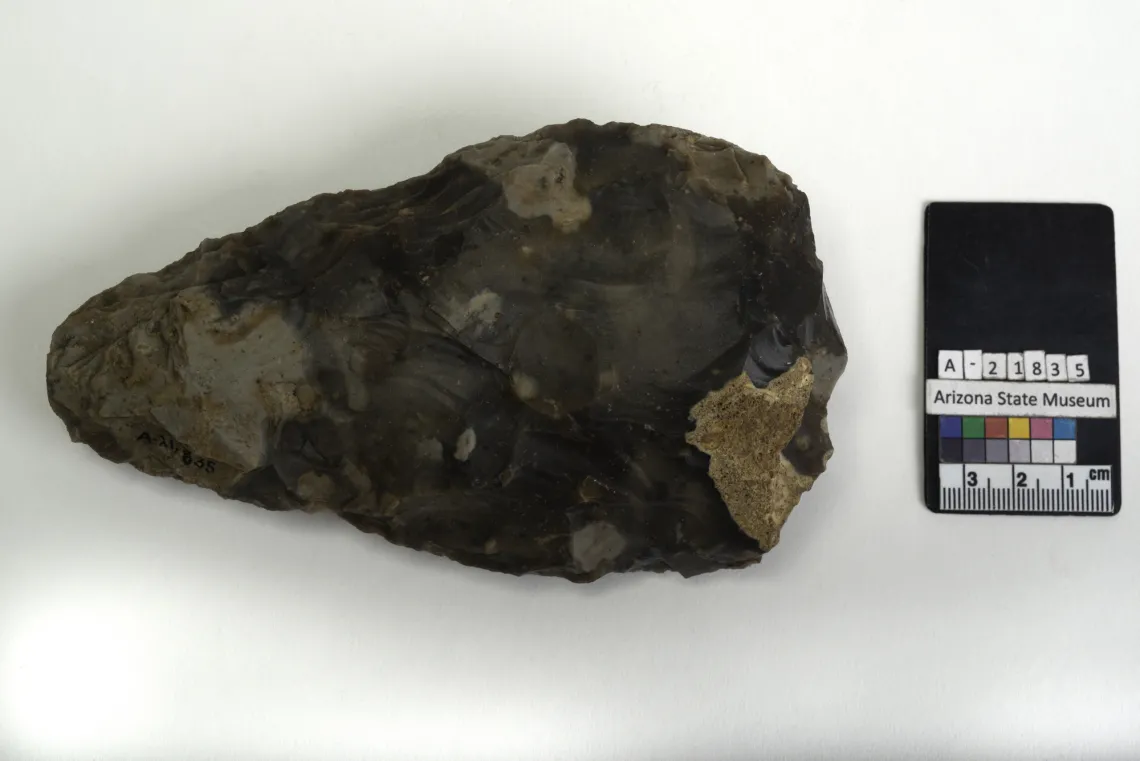
A-21835
At its most basic, technology is humanity’s attempt at controlling our environment (rather than our environment controlling us). Today’s technology is diverse and complex and modern society could not function without it. And yet all technology can be traced back over a million years ago to the Paleolithic Period (Old Stone Age) when human ancestors first began to make stone tools. ASM’s oldest objects are examples of this early technology in Europe.
The Paleolithic Era
- distinguished in human prehistory by the original development of stone tools
- Earliest sites are in Africa
- Although Homo habilis was long thought to be the first tool makers, evidence now suggests that Australopithecus sediba, who lived in south Africa some 2 million years ago, may have that honor
- Paleolithic Era in Europe began about 1.4 million years ago with the arrival of the first archaic humans (Homo heidelbergensis) and lasted until approximately 12,000 years ago
- The Paleolithic Era in Europe is divided into the Upper, Middle, and Lower Paleolithic Periods

ASM Objects from the Upper Paleolithic Period
The Upper Paleolithic Period sees the onset of “modern human behavior” with the first widespread evidence of organized settlements, the expansion of artistic expression (music and art), and a marked increase in artifact diversity. ASM has objects from the Magdalenian and Solutrean traditions, which are later traditions of the Upper Paleolithic in Europe. The Solutrean culture was located in France, Spain, and Portugal. Solutrean toolmaking is characterized by the development of lithic reduction percussion and pressure flaking rather than flintknapping to produce biface tools. The Magdalenian culture stretched from Portugal to Poland. Édouard Lartet and Henry Christy originally termed the Magdalenian as “the Age of the Reindeer” as sites dating to this period and culture contain extensive evidence for the hunting of reindeer, red deer, horses, and other large mammals.
Hover your mouse over the image to halt the slideshow.
ASM Objects from the Middle Paleolithic Period
Although hand axes continue to be made during the Middle Paleolithic, this period sees the development of the Levallois technique of stone tool manufacture, which includes striking flakes from a prepared core. This technique continues into the Mousterian tradition, which is characterized by the production of hafted tools (stone tools placed into wood shafts). While both Homo sapiens and Homo neanderthalensis are assumed to have relied on some scavenging during this time, there is also clear evidence of hunting and gathering as well as ritualized burials.
Hover your mouse over the image to halt the slideshow.
ASM Objects from the Lower Paleolithic Period
The Lower Paleolithic Period is dominated by the The Acheulean stone tool industry. This tradition constituted a veritable revolution in stone-age technology but is best characterized by the Acheulean hand axe; a multi-purpose tools used in a variety of tasks. Acheulean stone tools have been found over much of the Old World, from southern Africa to northern Europe and to the Indian sub-continent. Studies of surface-wear patterns reveal hand axes were used to butcher and skin game, dig in soil, and cut wood or other plant materials. Additionally, Acheulean tools are sometimes found with animal bones that show signs of having been butchered.
Hover your mouse over the image to halt the slideshow.
Acknowledgements
Text by Dr. Suzanne L. Eckert, ASM head of collections. Photography by Jannelle Weakly, ASM photo collections manager.








